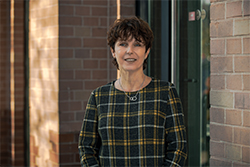
School Programme
The twentieth century is characterized by profound and rapid social changes and challenges that can only be understood in their global context. In addition, the internationalization of the education and labour market requires the development of an international ability to act as a key qualification in order to appreciate the diversity of cultures and recognize the differences in languages, traditions and religions - but also to analyse and understand fundamental questions of social development with a global framework to be able to understand. International orientation is therefore our open and multifaceted concept of contemporary general education.
Interdisciplinary school program
We are an independent secondary school in the Berlin district of Charlottenburg-Wilmersdorf with an interdisciplinary approach. The interdisciplinary teaching takes place with a focus on STEM and art (STEAM) and an international orientation. Because problems and challenges cannot be adequately analyzed from the perspective of a single subject, we see our interdisciplinary school program as an opportunity to prepare young people for the demands of a diverse, complex, globalized, digitized, and changing society. We particularly focus on skills such as adaptability, critical thinking, communication, and interdisciplinarity. Networked thinking and learning in contexts are necessary in order to be able to master the tasks of the present and the future.
We are convinced that the big issues of the 21st century require, more than ever, a well-founded scientific education. An education that enables pupils at our school to recognize, understand, explain and critically evaluate scientific phenomena and technical problems in everyday life and to draw conclusions from their own actions. Health, demographic change, and well-being; Safe, clean, and efficient energy; Climate protection, environment, resource efficiency, and raw materials; Intelligent, environmentally friendly, and integrated transport, for example, can be researched and solved through the subject areas of mathematics, computer science, natural sciences, and technology.
The integration of the fine arts into STEM subjects motivates students to engage creatively in STEM-related activities. Involving the fine arts enables STEM concepts to be presented in an innovative and visual way, to express one's own thoughts on science and technology through artistic expression, and to illustrate concrete ideas through drawings, and the production of models or graphics.
Subject linkers and interdisciplinary teaching
Processes of change shape our society at a pace that our world has never experienced before. Therefore, anyone who wants to actively shape the social change of tomorrow must already recognize today what is at stake, what could happen, and what will happen. At Mentora Gymnasium, we are of the opinion that the best academic preparation for this social shaping is a basic understanding of scientific, technical, and social contexts as well as an awareness of the great importance of STEM topics.
The STEM subjects mathematics, physics, chemistry, biology, and computer science are accordingly an integral part of the timetable at our secondary school and are taught in depth from year 7 in subject-related and interdisciplinary teaching content, including regular project work.
In modern classrooms, we strengthen the experimental and independent work of our students. In this way, we not only promote interest in and enjoyment of the STEM subjects, but also the approach to mathematical and scientific phenomena and issues and, in connection with aesthetic ways of thinking, their artistic representation. STEM-based education, therefore, aims to meet everyday problems with innovation, creative and critical thinking, and effective communication.
Girls and STEM
The social environment and the highly personal upbringing establish and strengthen role stereotypes, which later also influence the career choices of young girls and boys. Figures have been showing for years that either women or men are in the clear majority in selected occupations, which is why one then speaks of women's or men's occupations. In concrete terms, this means that the proportion of men in technical occupations and the proportion of women in service occupations is higher.
In order to work against this trend in a targeted manner and to inspire and win over more girls for STEM, we would like to contribute to changing social conditions with our interdisciplinary school program. Many companies, research institutions, and universities are very interested in getting young women interested in their STEM fields. They carry out projects and measures to win girls and young women over. These include, for example, "Come on, do STEM" and "Girls' Day", in which we take part with our students. This work is intended to help our high school structurally break down traditional role models and gender-specific attributions of occupations and activities.
International Orientation
The beginning of the 21st
The international orientation in our interdisciplinary school program accordingly emphasizes the unity and interdependence of human society, the development of self-confidence, and the appreciation of cultural diversity. International orientation is our answer to the requirements of sustainable development of the world society. At secondary level II, the basic course in social sciences offers e.g. the study of social and political phenomena - at local, state, national, and international levels. As a result, our students gain an understanding of the institutions, practices, and relationships that make up social life in our society as well as in international contexts.
